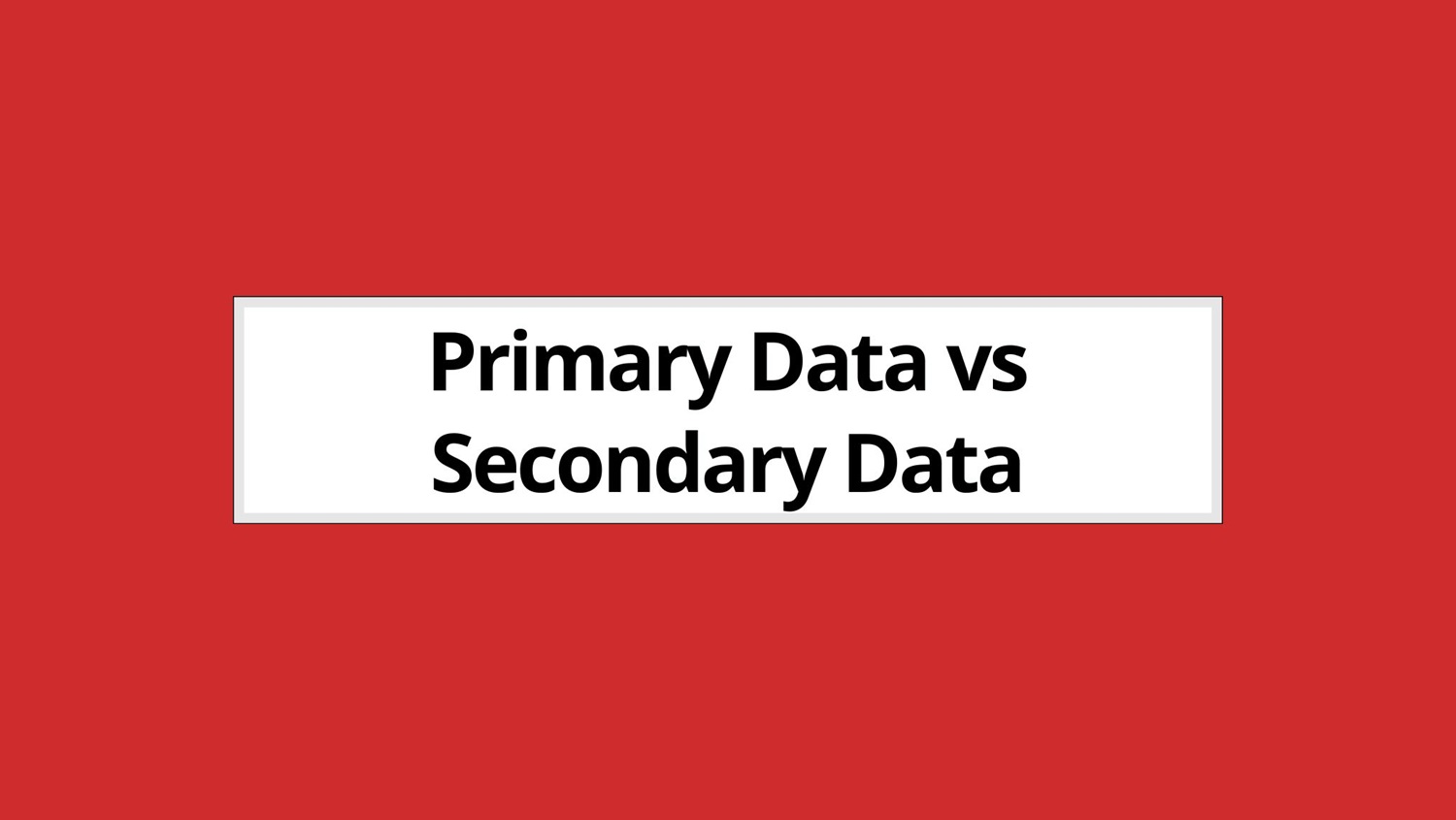Whether fine-tuning your marketing approach or starting anew, this complete guide answers your many questions, including ‘What is primary data in marketing?’. Moreover, the answer to that question lies in examining what is the primary purpose of marketing.
Marketing’s primary purpose is to inform consumers about the existence of a brand, a product, or a service. Furthermore, it is crucial if you are a new business attempting to launch and market a new product. As a marketer, your job is to identify the unfulfilled needs and desires of the people. Additionally, for this, we marketers rely on primary data, which is data collected directly from the market, i.e., consumers of goods and services.
To know in detail about what is primary data in marketing, what it is used for, and the types of primary data in marketing research – continue reading the guide.
See Also: What is Experiential Marketing? Advantages and Examples
Revisiting Primary Data
First, primary data is information the researcher collects from many sources. What is primary data used for in market research, then? It is the first-hand details gathered by the marketer on consumer behaviour, preferences, and opinions.
Ultimately, the goal is to sell your brand’s products and services. This is best done through marketing management orientation. Accordingly, you must first find out what consumers want that is not currently available.
Examples
For a better understanding of what is primary data in marketing, let us turn to a few example of primary data in marketing illustrated below:
1. A fashion store wants to rebrand itself to attract young customers. They may survey youngsters about their fashion preferences and buying habits to know this. Moreover, the store may also want to study the fast fashion brands these youngsters shop from.
2. A personal hygiene brand wants to introduce new skincare products. For this, they will have to study the needs of their existing customers and what product features they like or dislike. Moreover, the brand will try to understand if consumers are open to trying out new products.
Framework
When you study the market, you aim to find information to devise effective upstream and downstream marketing. For such an important study, you need to follow an outline. This will help you to collect the primary data in an organized manner and understand the demands of the target audience.
Consequently, we turn to a framework for gathering what is primary data in marketing.
- Problem Definition: Clearly define what market problem you wish to learn about. Do you want to know why a particular product is not selling well? Your problem definition will then be, ‘To identify the factors influencing the decline in sales of XYZ product.’

- Research Objective: After defining the problem, you must list the goals you wish to realize through the study. This will help you break down the defined problem into measurable steps. For the above example, your research goals could be: Assess consumer perception of XYZ products and name key competitors.

- Research Design: Depending on your research goals, you must plan how to conduct your research. We have the answers to this in our next section on ‘Methods to do primary research.’

- Problem Definition: Clearly define what market problem you wish to learn about. Do you want to know why a particular product is not selling well? Your problem definition will then be, ‘To identify the factors influencing the decline in sales of XYZ product.’
Remember: your framework must be well-designed and properly checked. After all, you wish to avoid errors as best as you can. Once confident in your outline, you will decide how to collect primary data.
See Also: Business Strategy vs Marketing Strategy: Main Difference
Methods to Do Primary Data Research
There are numerous ways to carry out Primary Research to obtain information about the consumer market. Below are five common methods you can follow to find out what consumers prefer and their expectations.
Method 1: Discussion
In the discussion method, participants interact with each other in a group or with the researcher himself.
They freely discuss their tastes, preferences, dissatisfaction, and expectations.
Method 2: Questionnaire
A questionnaire is a set of organized questions that helps researchers collect data efficiently.
When you wish to survey a large sample, the questionnaire method is handy – saving time and money on travel.
Method 3: Assessment
In this method, you assess various aspects of consumer behaviour and know more about the target audience.
Note your observations on the sample’s body language and facial expressions. Additionally, evaluate their responses for accuracy and fairness, focusing on what is primary data in marketing.
Method 4: Data Interpretation
Next up, you will infer based on the data collected. Data interpretation helps you precisely with that.
Look for patterns and trends. Furthermore, try to see if there is a relationship between any two variables. For instance, income and demand for sports cars.
Method 5: Focus Sessions
When you want to know the different consumer demands simultaneously, you can choose focus sessions. This involves participants having interactive conversations between themselves. The variety of opinions in such sessions gives valuable insights.
Be mindful when you decide on the method of gathering primary data! The chosen method impacts the answers to your marketing problem in the form of preliminary data. Consequently, it will also affect whether your marketing approach is ATL, BTL or TTL you choose and whether you will target the masses or a niche audience.
See Also: Best Social Media Management Tools in 2024
Common Errors
Due to the wide scope and nature of primary data in marketing, you may need to correct the study results.
To safeguard against errors in your market research, read on!
Population-specification Error
You will make a population-specification error if you need to know exactly what kind of consumers you wish to sample and survey. To avoid this, think of who uses your product the most. For instance, for a survey on edible oil, you will talk to mothers and bachelors, not the children or older people.
Furthermore, focusing on a specific demographic allows you to gather more targeted and relevant data. In this way, you ensure that your survey addresses the needs and preferences of your primary consumers. This approach enhances the accuracy and applicability of your research findings.
Selection Error
One of the most common errors in collecting primary data is the selection error. This occurs when only interested people respond to the survey. The lack of responses can influence the results negatively. You can tackle this by encouraging participation.
Non-response Error
The non-response error means you did not obtain a useful response from the sample surveyed. This error occurs when participants do not answer a few questions from the complete set.
Moreover, this type of error can significantly impact the reliability of your survey results, as it may introduce bias and affect the overall representativeness of the data. Therefore, minimizing non-response errors is crucial for ensuring the accuracy and validity of your research findings.
Primary Data vs. Secondary Data in Marketing
We have already explored what is primary data in marketing and how it can be collected. To fully know the significance of preliminary data, we will compare it against secondary data.
Secondary data in marketing involves relying on existing information about a product or service category. Examples of secondary data are reports by brands and governments, industrial research papers, and even company websites!
Moreover, the most basic difference between primary and secondary data in marketing is that preliminary data is specific.
While Secondary data is quicker and easier to gather, it answers for an entire market segment. However, on the other hand, the time and effort required in collecting primary data reward the researcher with unique insights that are particular to his study. A fitting combination of the two data types will help define a brand’s marketing goals.
See Also: What is a Marketing Audit? How to Use It?
FAQs
Why is primary data important in marketing?
Primary data provides first-hand insights into what consumers prefer and what affects their shopping. This is important as you will base your marketing strategies on this information.
How can a business collect primary data in marketing?
There are plenty of ways for a business to collect primary data. You can conduct surveys, interviews, and focus sessions to gather information.
What are the strengths of primary data in marketing?
The strengths of primary data in marketing are direct insights, accurate information, and current and objective-specific data.
What are the challenges of primary data in marketing?
Collecting primary data is a costly and time-consuming process. There is also a potential for bias.
How can I ensure the accuracy of primary data?
To ensure that the primary data collected is accurate, you must be clear about your aims, minimize bias, and pick a fair sample size.
Conclusion
In conclusion, marketing is complete with primary data. After all, only your target audience can tell you what they want. As a marketer, you should actively find out their demands. For this, you can use the primary data methods discussed above. The ‘What to do’ and ‘What not to do’ are included in this comprehensive guide. Revise when you find yourself doubting what is primary data in marketing.










